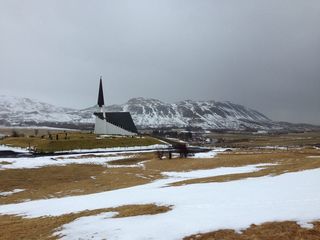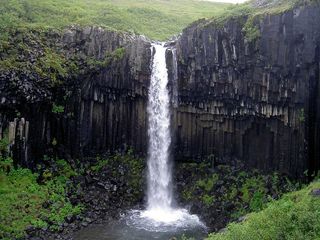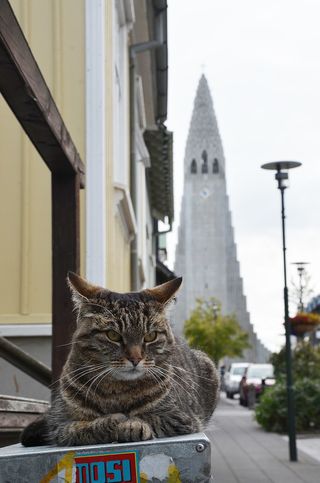Coronavirus Disease 2019
Stuck Inside: Take a “Fakecation” to Combat Cabin Fever
Finding ways to keep life interesting when everything is canceled.
Posted March 20, 2020
These are strange times, y'all. Everything is canceled, from conferences to concerts to restaurants. And for good reason: If we don't practice social distancing, our hospitals could become overwhelmed to the point that they can't treat all the infected or even people with other ailments that need attention.
Given the timing of the outbreak, one of the main things on my students' minds is, "What about spring break?" In the halls, I overheard several students expressing an intention to go on their cruises, since they had already paid for them. As someone who lives for travel planning, it's easy to understand their frustration and defiance, especially when you've had to scrimp and save for the trip. Nonetheless, it's a really, really bad idea. All the cool people are staying at home!
As we begin practicing social distancing and self-quarantine for what is shaping up to be quite a while, we're facing the prospect of extreme boredom at best. Long periods of isolation can lead to declining mental and physical health and increased irritation, so finding ways to keep things interesting and having something to look forward to will be a lifeline. I live near a tourist town, and as I was wondering about the local economic impact and the psychological effects of the pandemic, I had a brain wave: Since we can't take our planned vacations, why not take a fakecation?
A fakecation is "visiting" a location from your own house, doing all the things you'd do there to the extent that you can under the circumstances, all from the comfort of your own PJs. Why would this be beneficial? First, a fakecation can be a great exercise in savoring or using certain types of thoughts and behaviors to increase our positive emotions about experiences. One particular strategy called positive mental time travel, which is "traveling" back in time to remember previous enjoyable events or forward in time to positive future events, has been shown to predict increased positive emotions.
Another savoring strategy that has been linked to experiencing more happiness is being present, or intentionally focusing on enjoyable aspects of your current experience rather than the chaos and uncertainty in the outside world. Second, it can engage our minds in several ways that break up the monotony of our new indoor lives, such as setting goals, experiencing novel things, and thinking creatively.
When I plan a trip, I do extensive research on the area, including the food (that's the most important thing anywhere, right?), the traditions, the history, the landscape, the art, and the things to do. Travel research engages our minds and immerses us in another world outside our doors. Food and drink can transport us anywhere. Many museums are offering free virtual tours of their collections while they are closed. And with delivery services, we can still get items from interesting locales without leaving the house!
If you've suddenly become a homeschool teacher, this could be a fun educational opportunity, and if you want to make it social, you could even let friends or family plan parts of the fakecation and Skype for the celebration. If low employment is an issue for you, there are many online-only activities that you can do for free.
Your first step is choosing a location: You could revisit somewhere you've been or explore somewhere new! Choosing a place you've already enjoyed gives you some built-in knowledge of what to look for. For a bit more of a challenge, choose a place you've always wanted to go and read about it. Travel sites like Conde Nast Traveler and Frommer's are great places to go for ideas and introductory information. You might then do a deeper dive and learn something interesting about the location's history, common traditions, and important figures.
From your research, pick out at least three things to experience here at home. I recommend something to eat and drink, something to do, and something to watch, read, or listen to. As a bonus, you could pick up a souvenir. Below, I'll give an example from a place I've been that involves items you can find at your grocery store or online, but any location would do!

A Fakecation to Reykjavik, Iceland
Something to eat and drink: Hakarl is a traditional Icelandic food. To prepare it, first, you catch a Greenland shark. Then you dig a hole and bury it under rocks and gravel and leave it to sit for months to press out the poisonous urea, and… just kidding. Don't make it or eat it. I can tell you from personal experience it's a mistake unless, of course, you enjoy drinking ammonia!
In all seriousness, eat fish! Unsurprisingly, Icelanders eat a lot of fish. Battered fish and chips are a good choice, and for more adventurous types, try dried fish with butter! Icelandic people also love skyr, a thick, tangy yogurt similar to Greek yogurt that can now be found in U.S. grocery stores (my small town even has it!). Try it with blueberries.
Another food favorite in Reykjavik is waffles, and they're typically eaten topped with rhubarb jam and whipped cream. Finally, Icelandic people have a love affair with hot dogs. Granted, theirs are much better than ours and are typically made with lamb. They dress theirs a little differently than most folks, so make your own remoulade sauce or order some on the web! Pick up some Icelandic chocolate if you wish, but beware: Most of it has licorice in it!

Something to do: Learn to knit! Knitting is a national pastime in Iceland, and you can find wool from Icelandic sheep, called Lopi, everywhere. You can order Lopi online, but if you're new to knitting, I'd recommend an acrylic yarn to start with. KnittingHelp has excellent beginner tutorial videos in two styles of knitting, English and continental. Both have the same outcome, so use whichever style works best for you.
Another option is to take a hike! Even with social distancing measures in place, going outside for a walk is allowed. A popular activity in Iceland is visiting waterfalls, so if you are lucky enough to live in an area with waterfalls, you can simulate the experience! Otherwise, just take a walk wherever you can.

A popular attraction in Iceland is its swimming pools; they are always perfectly warm because they are heated with geothermal water! Tourists also flock to the Blue Lagoon, a geothermal pool and spa. Since you can't get to the pool right now, try taking a relaxing hot bath!
Something to hear: Icelandic people have an active music scene, so listen to some Icelandic artists like Sigur Rós for an ethereal sound, Of Monsters and Men for pop, and Kaleo for a more soulful pop-rock (bonus: Kaleo tends to shoot videos in breathtaking Icelandic scenery, like glaciers and volcanoes!).

Something to read: Cat lovers, you're in luck! Reykjavik loves cats. Read about some cats of Reykjavik and why cats dominate Iceland. To understand what shaped Iceland, you need to know about two things: its geology and its Viking past.
There are numerous online sources on Iceland's volcanic activity and how they use geothermal energy to do, well, everything. And to get a feel for Iceland's past, try reading some sagas! This website provides an excellent guide to reading sagas with recommendations based on the type of literature you like.
Souvenirs! There are many sites that sell Icelandic products, such as shopicelandic.com. Here, you can pick up anything from wool goods to food products.
The celebration: You can do these activities as you go, but it would be more memorable to do them as a coordinated event. Take a walk. Come back and listen to Icelandic music as you cook waffles and prepare your other foods. Munch Icelandic snacks as you knit. Share pictures and information you've found with others in your home or over the web. And maybe, if you're feeling silly, retell the sagas in a funny, modern way.
Whether it's a fakecation or something else, I hope you find hope and enjoyment during this strange and anxious period of time. Stay safe and wash those hands!




